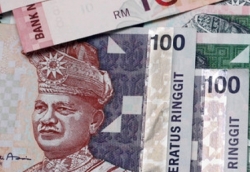Trading the Malaysian Ringgit

Malaysia is a rapidly developing country which is now experiencing industrialisation. Its currency plays a key role in its development, since it has been strong for some time, and the Malaysian central bank, the Bank Negara Malaysia, has a policy of keeping the exchange rate of the Ringgit down instead of supporting it. Originally, the Malaysian Ringgit was pegged to the US Dollar; however, over time the peg was removed, only to be reinstated in 1997 as Asia suffered a financial crisis. Today, that peg to the US Dollar has once again been removed, and the currency now floats against many major world currencies.
The Malaysian Ringgit’s Historical Background
The Malaysian Dollar first came into being in 1967, having been issued by the Bank Negara Malaysia, Malaysia’s new central bank. This currency replaced the old Malaya and British Borneo Dollar, yet retained the denominations of its preceding currency, with the exception of the $10,000 denomination. The currencies of Singapore, Brunei and Malaysia had signed up to a currency union under the Interchangeability Agreement, and despite the emergence of three separate currencies for the countries in question, the Malaysian Dollar was still exchangeable at par with the Brunei and Singapore Dollars until 1973, when Malaysia pulled out of this agreement. The symbol RM (for Ringgit Malaysia) was introduced in 1993, replacing the symbol M$, or simply $, to refer to the Malaysian Dollar. The Malaysian Ringgit was a free-floating currency for a 2-year period between 1995 and 1997; however, after the financial crisis in East Asia in 1997, the Bank Negara Malaysia took the decision to peg the currency to the US Dollar in 1998, although this situation came to an end in 2005, leaving the Ringgit to operate within a managed float against a number of major world currencies. The Bank Negara Malaysia often intervenes in the the financial market in order to maintain the trading-level stability of the Malaysian Ringgit, and has designated the currency to be non-tradeable outside the country.
Malaysia’s Economic Background
The economy of Malaysia is on the rise, and is developing in industrialisation. The country’s economy is now the fourth biggest in South East Asia after Indonesia, Thailand and the Philippines, and it is the world’s 35th largest economy. The economy of Malaysia is one of the globe’s most competitive, and it is very diverse and robust thanks to the export value of its high-tech products, which stands at around $63 billion. Malaysia also exports large amounts of palm oil products, exporting the second greatest volume after Indonesia.
Malaysia has many natural resources, especially in the minerals, forestry and agricultural sectors. Its most valuable exported resource is petroleum, with tobacco, pineapples, pepper, cocoa, timber and rubber also being vital to the economy’s health.
Although the Malaysian government is introducing policies to increase the amount of income per capita to speed up the process towards making the country a high-income one by 2020, the growth within the country of wages and labour productivity is still slow. As central government revenues are highly dependent upon oil exports, the currency has seen volatile fluctuations, especially during the collapse of oil prices during 2015. In response, the government has stepped up its measures to increase revenue, and has introduced a Government Service Tax at a rate of 6% in order to reduce the deficit and meet the federal debt obligation.
Factors Influencing the Malaysian Ringgit’s Rate of Exchange
There are a number of factors known to have an impact on the Forex value of the Malaysian Ringgit. These include the following:
- The flow of exports and imports into and out of the country
- The flow of capital into and out of the country
- The rate of inflation set by the Bank Negara Malaysia
- The merchandise trade balance
- The relative growth of the economy
- The long-term and short-term interest rate differential
- The cost of borrowing







